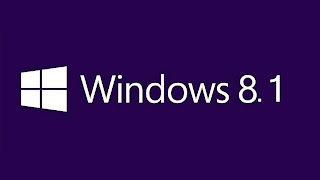സ്മാര്ട്ട്വാച്ചിന്റെ കാര്യത്തിലും
ഗൂഗിളിന്റെ പങ്കാളി എല്ജി - റിപ്പോര്ട്ട്
ഗൂഗിളിന്റെ നെക്സസ് 5 സ്മാര്ട്ട്ഫോണ് നിര്മിച്ച എല്ജി തന്നെയാകും, കമ്പനി നിര്മിക്കുന്ന സ്മാര്ട്ട്വാച്ചിന്റെയും നിര്മാതാവെന്ന് റിപ്പോര്ട്ട്. ഗൂഗിള് സ്മാര്ട്ട്വാച്ചിന്റെ ചില സ്പെഷിഫിക്കേഷനുകളും @evleaks പുറത്തുവിട്ടു.
ഗൂഗിള് സ്മാര്ട്ട്വാച്ച് ഒരുപക്ഷേ ഇപ്പോള് നിര്മാണഘട്ടത്തിലാണെന്നും, അതില് 1.65 ഇഞ്ച് ഐപിഎസ് എല്സിഡി ഡിസ്പ്ലെ (280 X 280 പിക്സല് ) ആണുള്ളതെന്നും റിപ്പോര്ട്ടുകള് സൂചിപ്പിക്കുന്നു. 512 എംബി റാം, 4ജിബി ഇന്റേണല് സ്റ്റോറേജ് എന്നിവയാണ്, കഴിഞ്ഞ ദിവസം പുറത്തുവന്ന മറ്റ് സ്പെസിഫിക്കേഷനുകള് .
ടെക് വെളിപ്പെടുത്തലുകള് സ്ഥിരമായി നടത്താറുള്ള @evleaks പുതിയ വെളിപ്പെടുത്തിലിനൊപ്പം പക്ഷേ, ഗൂഗിള് സ്മാര്ട്ട്വാച്ചിന്റെ ദൃശ്യങ്ങളൊന്നും ട്വിറ്ററില് പോസ്റ്റ് ചെയ്തിട്ടില്ല.
ഫിറ്റ്നെസ് ബാന്ഡുകള് , സ്മാര്ട്ട്വാച്ചുകള് , ഹെഡ്സെറ്റുകള് എന്നിങ്ങനെ ശരീരത്തിലണിയാവുന്ന ഗാഡ്ജറ്റുകള്ക്കായി ഒരു പ്രത്യേക സോഫ്റ്റ്വേര് കിറ്റ് ( SDK ) പുറത്തിറക്കുമെന്ന് അടുത്തയിടെ ഗൂഗിള് പ്രഖ്യാപിച്ചിരുന്നു. ഇത്തരം ഉപകരണങ്ങള് ഗൂഗിള് എപ്പോള് പുറത്തിറക്കുമെന്ന് പക്ഷേ, സൂചനയൊന്നും നല്കിയില്ല..
ഗൂഗിള് ഒരു സ്മാര്ട്ട്വാച്ച് 2014 ല് പുറത്തിറക്കുമെന്ന്, കഴിഞ്ഞ വര്ഷം 'വാള്സ്ട്രീറ്റ് ജേര്ണല് ' റിപ്പോര്ട്ട് ചെയ്തിരുന്നു. ആ ഉപകരണം രൂപംനല്കുന്നതിന്റെ അവസാനഘട്ടത്തിലാണ് ഗൂഗിള് എന്നും റിപ്പോര്ട്ടിലുണ്ടായിരുന്നു.



.jpg)






.jpg)
.jpg)
